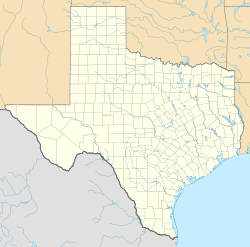Opelika, Texas facts for kids
Quick facts for kids
Opelika, Texas
|
|
|---|---|
| Country | United States |
| State | Texas |
| County | Henderson |
| Elevation | 420 ft (130 m) |
| Time zone | UTC-6 (Central (CST)) |
| • Summer (DST) | UTC-5 (CDT) |
| Area code(s) | 430, 903 |
| GNIS feature ID | 1380308 |
Opelika is a small, unincorporated community located in Henderson County, in the U.S. state of Texas. An unincorporated community is a place that doesn't have its own local government. Instead, it's usually managed by the county.
Contents
Discovering Opelika's Past
How Opelika Got Its Name
Opelika was once known by a different name: Wanda. A settler who moved here from Opelika, Alabama decided to rename the community. This is how Opelika, Texas, got its unique name!
Early Life and Businesses
Life in Opelika began to take shape in the early 1900s. A post office opened its doors in 1912, making it easier for people to send and receive mail. By 1914, the community had several important businesses. These included a poultry breeder, a cotton gin (a machine that separates cotton fibers from seeds), and a group for fruit growers. There was also a general store where people could buy everyday items, and a real estate office.
Population Changes Over Time
When Opelika was first starting out, about 50 people lived there. This number stayed about the same until after World War II. After the war, the population dropped to around 20 people. By 1970, there were no longer official records of how many people lived in Opelika. The post office closed in 1923.
Schools and the Oil Industry
Opelika had public schools in 1928 and 1929, showing that families lived there. Maps from the mid-1930s show that the community had a school, a church, and at least one business. During the 1930s, Opelika became very important for the oil industry. The Opelika oilfield, where oil is found, is located just north of the community.
Opelika Today
Even though Opelika is a small, unincorporated community, it still has some important landmarks. Maps from the 1980s show that a church and a cemetery were still present. These places often serve as gathering spots and reminders of the community's long history.



